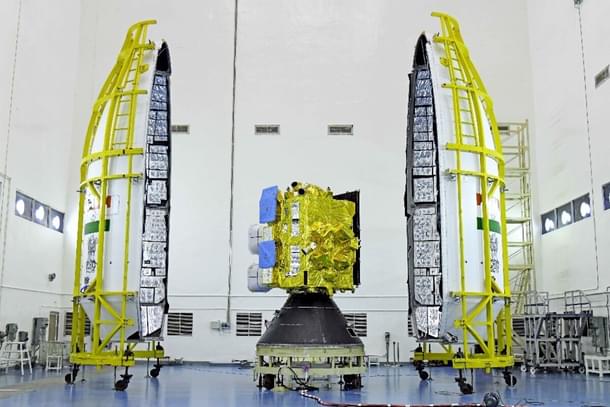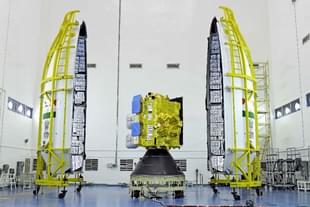News Brief
INSAT-3DS: Here's All You Need To Know About India's New Meteorological Satellite Set To Launch On 17 February
Nayan Dwivedi
Feb 15, 2024, 02:46 PM | Updated 02:46 PM IST
Save & read from anywhere!
Bookmark stories for easy access on any device or the Swarajya app.


The Indian Space Research Organisation (ISRO) is set to launch the INSAT-3DS satellite from Sriharikota on 17 February.
Funded by the Ministry of Earth Sciences, this new facility weighing 2,274 kilograms will provide weathermen and scientists with enhanced satellite data and high-resolution images of the Earth.
The satellite is designed to facilitate the development of newer satellite products essential for tracking cyclones, monsoon systems, thunderstorms, and other natural disasters.
INSAT-3DS Satellite is a follow-on mission of Third Generation Meteorological Satellite from geostationary orbit.
It is designed for enhanced meteorological observations and monitoring of land and ocean surfaces for weather forecasting and disaster warning.
The satellite will augment the meteorological services along with the presently operational INSAT-3D and INSAT-3DR satellites.
The primary objectives of the mission are:
To monitor Earth’s surface, carry out oceanic observations and its environment in various spectral channels of meteorological importance.
To provide the data collection and data dissemination capabilities from the data collection platforms (DCPs).
To provide satellite-aided search and rescue services.
As a continuation of the Third Generation Meteorological Satellite series, INSAT-3DS will join its predecessors INSAT-3D and INSAT-3DR, which have been instrumental in meteorological operations since their launch in 2003 and 2016, respectively.
INSAT-3DS comprises four payloads, including an Imager, a sounder, a data relay transponder, and a satellite-aided search and rescue transponder.
The multi-spectral imager will capture images across six wavelength bands, enabling visualisation of crucial atmospheric parameters such as water vapor.
Also Read: Supreme Court Verdict On Electoral Bonds Scheme: Here's Everything You Need To Know
Nayan Dwivedi is Staff Writer at Swarajya.





